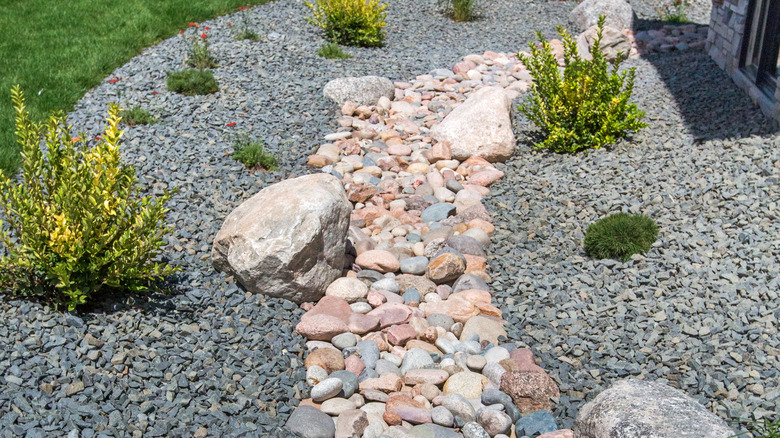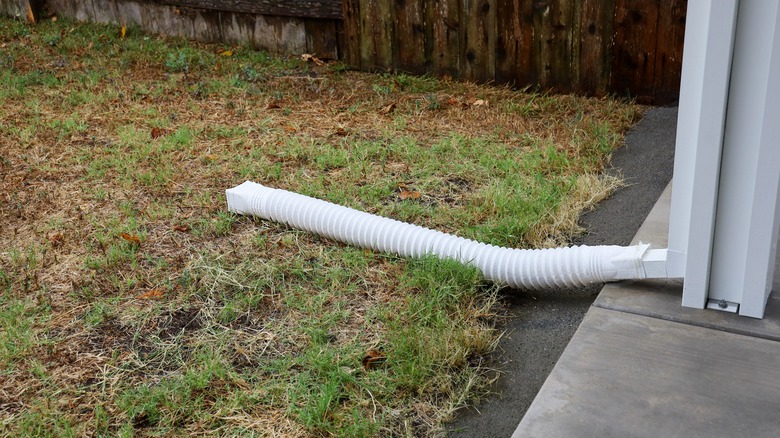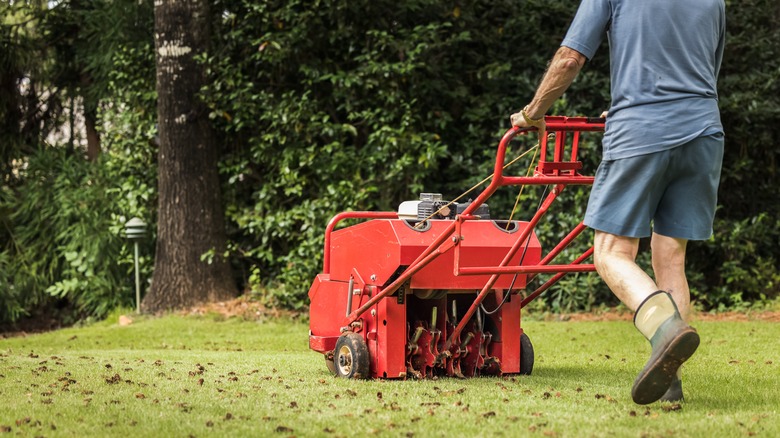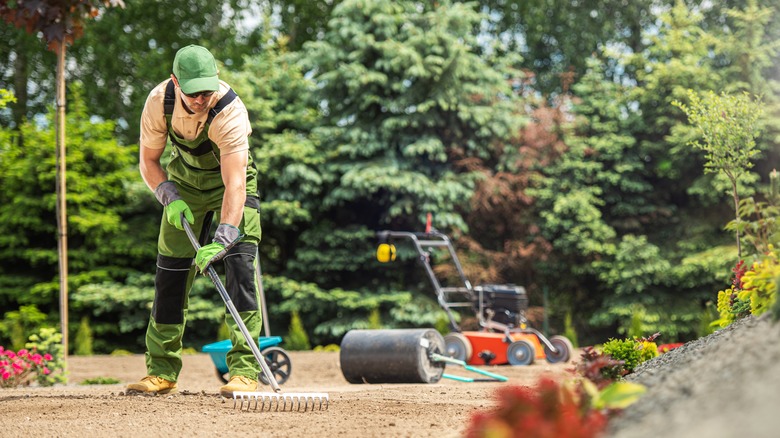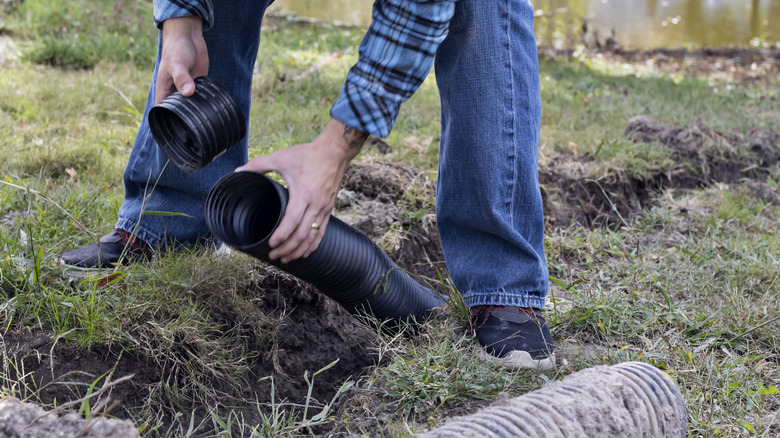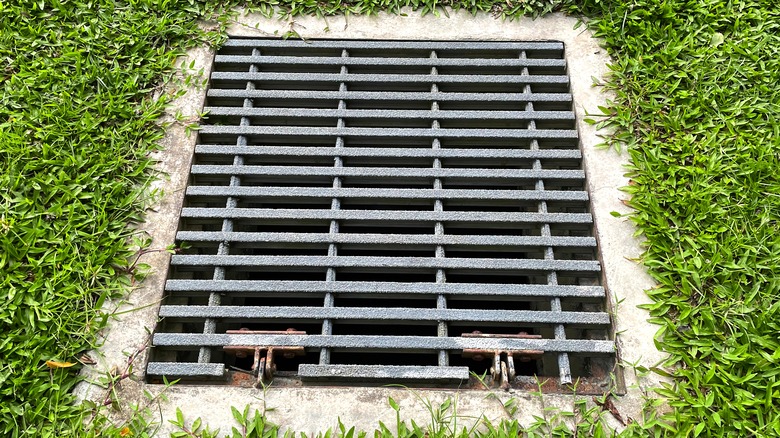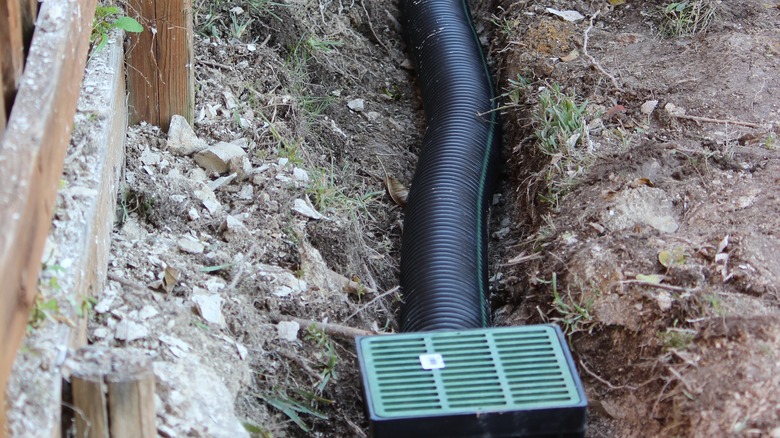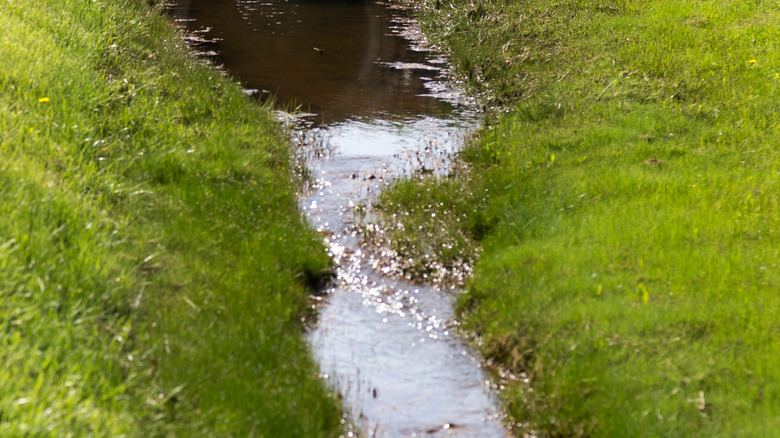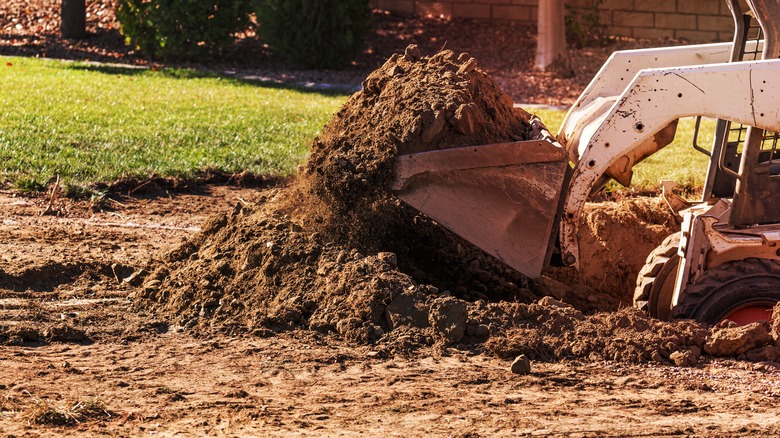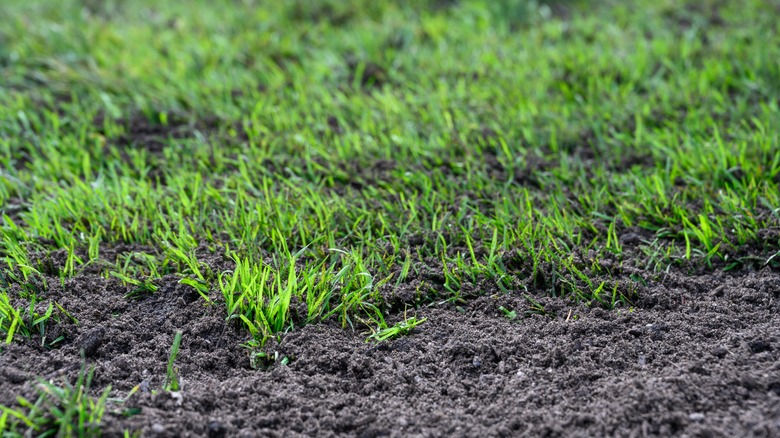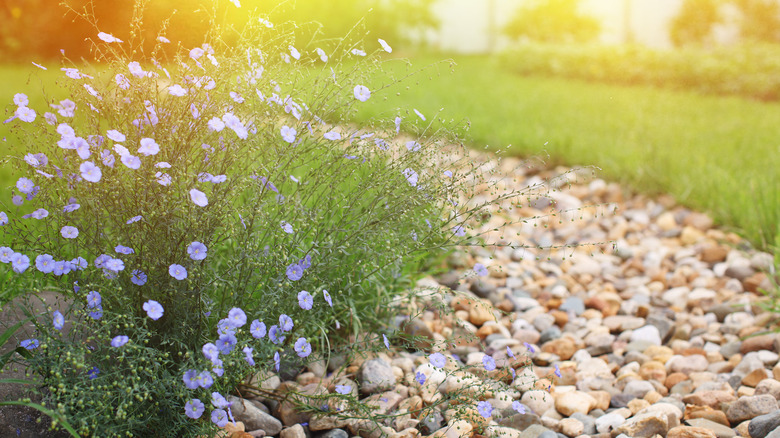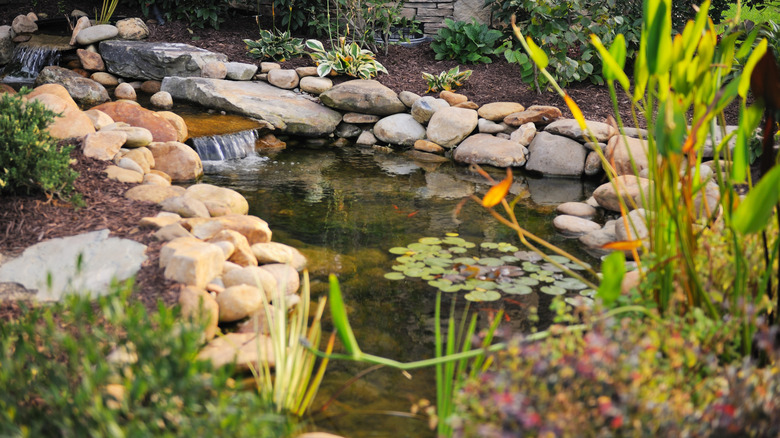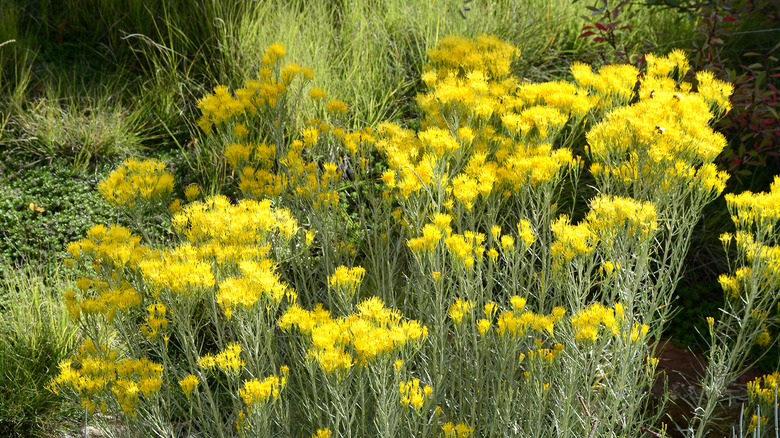Prevent Overflow In Your Yard With These Useful Drainage Solutions
Drainage problems in your yard can lead to soggy lawns, flooded walkways, and large patches of standing water after rainfall or snow melt. Poor drainage creates unsightly conditions that ruin your yard's landscaping and curb appeal. Additionally, standing water leads to an unhealthy environment, as it becomes a breeding ground for mosquitoes, cockroaches, and termites. Fortunately, there are numerous solutions for drainage problems in your yard. Some are easy DIY fixes while others may require the help of professionals with specialized knowledge and heavy equipment.
Inadequate drainage in your yard may be caused by a number of factors, including the grade and slope of your property, the design of your gutter system, the soil composition, and more. Depending on the source of the problem, you might find success with one of the solutions explained here. Read on to learn more about catch basins, rain gardens, dry creek beds, and other solutions to yard drainage problems.
Add extenders to your gutter downspouts
Most home gutter systems collect water running off the roof and direct it into downspouts that dump the water only a short distance from the building's outside walls. A system like this may produce puddles and standing water close to the home's foundation. Over time, this situation can lead to foundation damage, basement flooding, and the growth of harmful mold. To alleviate this problem, you can install extenders such as these options from Lowe's to increase the efficiency of your gutter downspouts.
Extenders provide a pathway for water from the gutters to flow away from the building and empty into your yard at a safe distance from the home's foundation. Ideally, you'll want the extenders to carry the water at least 8-to-10 feet away from the house. For aesthetic and practical purposes, you may want to bury the extenders in shallow trenches and cover them with mulch. However, burying the gutter extenders does not always ensure that the water won't flood your yard. For greater efficiency in water removal, you can connect the buried downspout extenders to the curb or to a larger, underground drainage system . A solution such as this will ensure that water does not collect in your lawn.
Aerate your lawn on a regular schedule
Poor drainage in your yard may show up as a soggy lawn that squishes underfoot when you walk on it. When the soil is compacted, the situation is not healthy for the lawn, and the roots of your grass can be damaged from the excess moisture and lack of oxygen. To fix the problem, you can rent a core aerating machine that removes numerous, tiny plugs of soil from the lawn to allow ample movement of air, water, and nutrients through the soil. Aerating your lawn on a regular schedule keeps the soil from compacting to the extent that it stops draining properly.
The experts at Scott's recommend aerating the lawn in early spring or fall for grasses that grow in cool seasons. For warm-season grasses, think late spring or early summer. This procedure is not a one-and-done solution. Depending on your type of soil, you'll want to maintain a regular schedule for aerating your lawn. Lawns growing in clay-heavy soil should be aerated every year. If the soil is sandy or loamy, you can do this job once every two to three years. As a preventive measure, regular lawn aeration saves you from dealing with future drainage problems in your yard.
Amend clay-heavy soil to improve aeration and drainage
According to Danny Lipford of the TV show Today's Homeowner, the ideal soil for a healthy lawn consists of 40 percent sand, 40 percent silt, and 20 percent clay. Similarly, the Almanac states that the most fertile soil for gardens contains equal parts of sand, silt, and clay. However, you might live in a geographical location where the soil contains an excessive amount of clay. It holds water and prevents drainage, setting the stage for standing puddles and soggy, unhealthy conditions. To fix the drainage problems caused by too much clay in your soil, you can amend it to promote the free movement of oxygen along with proper water drainage.
Amending your soil means adding other types of soil and organic matter to balance its natural, clay-heavy composition. You can do the job by applying a top dressing of sand, loamy soil, or compost to your existing soil. To really work the amendments into your soil, start with tilling the yard and follow up with top dressing, grass seed, and fertilizer. The new mixture produces a more porous soil that should allow water to flow through it, putting an end to your drainage problems.
Clear roots and obstructions from drain pipes
A drainage system in your yard consists of a network of pipes that carries water away from the house, diverting it to a storm drain or other out-of-the-way location. If you notice standing water or puddles in the yard, it might be that the system is not functioning at its maximum capacity. Especially in the case of older homes, the drain pipes may become clogged with silt and organic material. Tree roots can enter the pipes at their joints and grow until they fill the pipes and clog the drainage system. Significant blockage of drain pipes in your yard may be a problem that requires professional remediation.
The professionals from a drainage company can apply a procedure called "drain jetting" where they use high-pressure water to clean out the blocked pipes. Additionally, they might use a plumbing snake to remove small roots and debris. In the case of more severe damage, the professionals can reline the drain pipes with new piping material to repair the damage and get the drainage system up and running again. With cleaned and repaired drainage pipes, your lawn and landscape should be free of standing water.
Install an underground catch basin in the yard
If you have a low area in your yard where water pools after rain storms or the snow melts, a catch basin might be the answer to your drainage problem. It consists of a hole dug in the ground at its lowest point. Inside the hole, a vertical pipe leads to a box or basin installed below the ground. This container is made of plastic or metal and features an additional, horizontal pipe where water empties from the basin, flowing into a larger drainage system such as the gutter system beneath your neighborhood streets. At the ground level, you see only a metal grate that covers the top of the hole. Consequently, the catch basin does not detract from the beauty of your landscape.
In most cases, adding a catch basin to your yard is a job for drainage professionals. Installed at a low spot in your yard, a catch basin prevents flooding as well as the problems that arise from standing water and soggy soil. These include breeding insects, mildew growth, and odors. However, you'll want to maintain the catch basin by clearing debris from the surface grate and the pipes to keep the system from clogging up. If you don't clean it periodically, the catch basin might become an attractive home for insects and rodents. Remove the grate and clean the catch basin once a year.
Add a French drain to your yard
In yards where rainwater tends to collect close to the house, homeowners are wary of damage to their homes' foundations due to the presence of excess moisture over time. In a situation like this, a French drain functions well to divert water away from the building to lower-lying areas where it can be absorbed or carried into a drainage system. Adding a French drain to your property may be a DIY job. Alternatively, you might hire professionals to ensure proper installation at a descending angle that facilitates the continuous flow of water away from the house.
To create a French drain, start by digging a trench that leads away from the house, gradually descending by at least a 1-percent decline to a lower area where the water is dispersed. The system is dependent on gravity, so the angle of decline is important to ensure that the French drain works as intended. Next, line the trench with water-permeable landscaping fabric and gravel. Then lay a perforated pipe horizontally in the trench. Water traveling through the trench will enter the pipe through the perforations. To complete the French drain, you can cover the top with either gravel or sod so that it blends into your landscape.
Dig a grassy swale
When poor drainage causes soggy conditions in your yard, the problem may be that the water has nowhere to go. To solve this problem, you can create a shallow swale that directs rainwater away from the areas where it collects and puddles. Additionally, a swale can prevent soil-erosion damage to the yard by providing a run-off pathway for heavy rains. A small swale might be a DIY project. But if your drainage problem requires digging a large ditch, it may be a job for professionals with heavy equipment.
A grassy swale is more than just a drainage ditch. It should be three times wider than it is deep, and the sides should slope gently to prevent erosion. Keeping in mind that the water flow depends on gravity, you'll want to dig the swale so that it slopes downward one inch for every linear foot. Ideally, the swale should direct rainwater to a rain garden or to an underground drainage system. After digging the swale, you'll want to plant it with grasses or other vegetation that drinks up the water. With the addition of grasses and plants, a swale blends in and contributes to the beauty of your landscape.
Alter the slope and grading of your yard
When you're coping with significant drainage problems in a residential yard, it might be time to consider the overall slope and grading of the property. In most cases, this type of alteration to your yard's terrain is not a DIY project. For best results, a professional landscaper can assess the situation and calculate the precise leveling and grading procedures that are required to solve your drainage problems.
Your yard should slope downward and away from the foundation of your house at an angle of one to two inches per linear foot, measuring at least 10 feet out from the building. Without this type of grading, rainwater and melted snow will collect next to the house, causing damage to the foundation and the basement. Additionally, a severe slope in the yard can set the stage for significant soil erosion. Re-grading an eroded area can prevent future erosion and create more favorable conditions for landscaping. A professional landscaper with the right knowledge and heavy equipment can move the dirt in your yard to create an appropriately sloping grade that drains properly. Regrading your yard for the best sloping angles will prevent the problems of soggy ground and standing water as well as soil erosion from rapid run-off.
Build up low-lying areas
Some yard drainage problems can be fixed without digging or regrading. If water puddles in a low-lying spot of the yard, you can remedy the situation by building up the ground level in only that targeted area. The fix may be as simple as adding more dirt to a low patch and raking it in to mix with the existing soil. Do this in the spring or fall to avoid stressing the grass during the hot summer months.
According to the lawn care experts at Waynes, you should build up low spots with a mixture of 50 percent topsoil and 50 percent fine sand. This medium promotes proper drainage by allowing water to move through it. Apply the new soil and rake it in to blend with the existing soil. Bring the level up only a half-inch at a time, allowing the new soil to settle and the grass to grow up through it. When the grass grows up through the new soil mixture, it's time to repeat the process. Continue bringing the ground level up in half-inch increments until the area drains properly and no longer holds standing water after heavy rains.
Create a dry creek bed
If you have a sloping yard where rainwater run-off tends to follow a downhill pathway, you can improve drainage, prevent erosion, and enhance your landscaping by creating a dry creek bed. Rather than redirecting run-off in a new direction, a typical dry creek bed takes advantage of the pre-existing terrain contours of a residential yard. It mimics the look of a natural creek during the rainy season when it serves as a channel for rainwater, but it also works as an attractive piece of garden hardscape when it's dry. Creating a dry creek bed is a DIY job that solves the drainage problems of water pooling in low areas or eroding your soil due to rapid run-off during heavy rains. As a bonus, it adds to your yard's curb appeal.
A dry creek bed should slope away from your home at a declining angle of one inch for every 10 linear feet. You may need to remove some soil to create the necessary slope. Line the shallow channel with water-permeable landscaping fabric. Then, fill the bed with river rock and stones of varying shapes and sizes. Add the final touches by planting grasses and small plants alongside the stony creek bed. It not only solves your drainage problems but it becomes an integral part of your landscape and an attractive focal point for your garden.
Install a pond or water garden
Does the lowest point in your yard become a soggy mess where water pools during the rainy season? To solve your drainage problems, you might install a pond in this location. It will not only contain the excess water, but the pond can become a focal point for a lovely water garden. This solution to your drainage problems might be accomplished as a DIY job. On the other hand, if you're thinking of using earth-moving equipment to dig a large pond, it might be wise to call in the professionals.
A pond situated in a low spot of the yard improves drainage by serving as a water storage area for run-off from a lawn or garden that is located at a higher elevation. But before you start digging, there are numerous factors to consider. These include avoiding underground utilities and large tree roots as well as locating the pond near an electrical outlet for the pump and a water source for adding water during the dry seasons. When you've worked out the logistics and installed your pond, you can exercise your creativity by planting water-loving plants all around it and adding stones in varying shapes, sizes, and textures. In this way, you can build a lovely water garden while you're solving a yard drainage problem.
Plant a rain garden
A rain garden is an ideal addition to your landscape when it's planted in a slight dip in the terrain where rainwater collects. Designed to drink up the water that runs off from a roof, street, or driveway during a rain event, this type of garden allows the excess water to sink into the ground. According to the Groundwater Foundation, a rain garden absorbs up to 90 percent of nutrients and chemicals and 80 percent of sediments from rainwater run-off. When compared to a grass lawn, a rain garden soaks up 30 percent more water, allowing it to disperse into the soil.
A rain garden is not the same as a water garden. When it's not raining, the area remains as dry as other parts of the landscape. Plant the rain garden with perennials that are native to your area, focusing on species that flourish in wet conditions. Consider planting trees and large shrubs as well as tall grasses. Then, fill in the area with smaller, flowering perennials. In addition to solving the drainage problem caused by rainwater run-off, the rain garden becomes a haven for birds, butterflies, and other pollinating insects.
